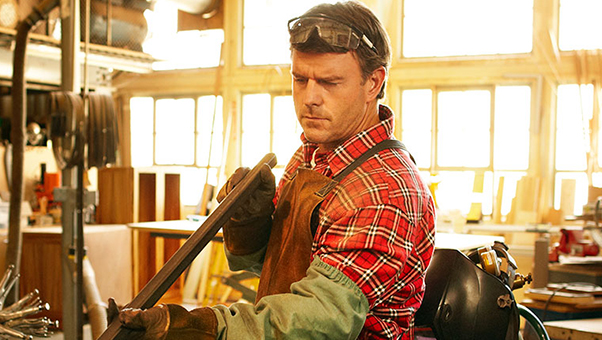
How to Practice Safety in Precision Machine Shops
Machine shops make the products, and product parts, that businesses and consumers use every day without much thought. That fabrication requires skilled machinists, and the work is often dangerous. In fact, the Occupational Safety and Health Administration (OSHA) estimates machine workers incur more than 18,000 amputations, lacerations, crushed fingers, burns and other injuries — and more than 800 deaths — every year.
Machine shop safety rules are a critical component to enforcing safe work practices in all kinds of machine shops. These rules include:
- Machine training: Any machinist on the job, whether new to the company or the type of machine should be properly trained in how to operate that machine safely and effectively. Employees should never touch or turn on a machine of any kind without knowing proper protocol.
- Machine guarding: Machine safeguarding needs differ due to physical characteristics and operator involvement. This is a safety feature that shields hazardous parts of a machine from the operator, to help prevent common injuries or make injuries less severe, no matter the machine.
- Protective equipment: Machinists must always wear the appropriate protective equipment to shield their head, hands, eyes, face and feet from injury, as well as respiratory gear. Protective clothing that will not get tangled in machinery and deters chemicals and sparks present in the shop environment is another consideration.
OSHA advises business owners of machine shops to provide proper safety planning and training, safe walking/working surfaces, fire planning and proper ventilation. It offers an exhaustive small business owner safety checklist here.
21st century machines and production techniques grow ever more complicated. Today’s metal-fabricating machines, CNC (Computer Numerical Control) machines, EDM (Electrical Discharge Machining) machines and 3D printers each bring some unique safety challenges.
Metal-fabricating machines
Put simply, metal-fabricating machines make and manipulate metal parts and metal products. The moving parts needed in the machining process can cause a variety of injuries, including amputations, crushed body parts, burns and blindness. Therefore, any machine part that could cause injury must be safeguarded. Metal fab requires the use of hazardous substances and can also produce them. Owners who want to promote safety in machine shops must monitor for dangerous levels of toxins like lead, asbestos, inorganic arsenic, cadmium, and formaldehyde – all common OSHA citations. Metal fab also usually involves welding, cutting and brazing, which creates greater risk for burns, lacerations and amputations. Welding alone creates a variety of hazards, including fumes and radiation. Owners must enact proper work procedures, ensure machines and tools are well-maintained and that all equipment and supplies are used and stored safely.
CNC machines
CNC machines are controlled by computers, most commonly referred to as mills, lathes, grinders and routers. Though the computers and software do the work, human machinists remain part of the process and must be aware of safety hazards. Like other machines, CNC machines should only be operated by those with proper training and they should not operate without human supervision. Before use, a machinist should check the CNC machine to ensure parts and tools inside are sharp, set correctly and undamaged. The inside of the machine and seating surfaces should also be clean and free of debris. The machinist should test tools before installation, to make sure the machine isn’t operating when loading a tool and confirm the accurate tool data has been set for the program. Tools should only be used according to manufacturer specifications and be tightened to the manufacturer’s suggested force.
EDM machines
EDM machines use a pulsating electrical charge (spark) of high-frequency current through an electrode as a cutting tool to shape metals. Unsurprisingly, shock and fire are the two most common hazards with these machines. EDM operators must ensure the work area is grounded and never touch the electrode while the machine is being operated. The field should also be dry and free from flammable material and chemicals. Operators must avoid wearing conductive clothing or jewelry and instead wear closed-toe rubber-soled shoes, as well as protective eyewear, never looking directly at the spark while the machine is being operated. Since an EDM machine’s electrode is bathed in a continuous flow of dielectric fluid, if oil level gets too low, the electrode arc can spark a fire. Therefore, proper machine maintenance is critical to avoid potential fire incidents.
3D printers
3D printing is a process where objects are created through successive layers of material, most often plastics, and guided by a 3D model or design from a computer. It can include several methods: extruding, which uses a continuous filament of thermoplastic material; sintering, which uses a laser; or curing, which uses liquid resin for layering. While the process is revolutionary and allows nearly anyone to manufacture almost any object, 3D printing can release harmful gases and vapors at high temperatures. A UL study found the process can also release nanoparticles that machine operators can inhale. In both cases, proper ventilation and air filtration are important and operators should consult their 3D printer’s user manuals for safety instructions. Some 3D printers use UV light to cure objects, and that light source can damage skin or vision.
Machine shop safety is up to operators and machinists. In addition to training, machine guarding and protective gear, both need to know the hazards specific to different machines processes and individual machine models. As technology changes, good safety protocols must also evolve.
EMPLOYERS is committed to helping small businesses operate safer, more efficient work places. Contact EMPLOYERS® today to learn more about our cost-effective workers’ compensation insurance.
